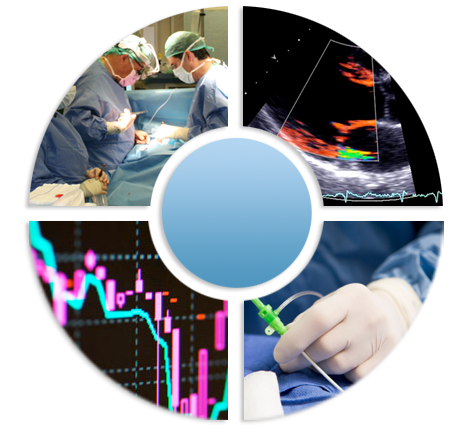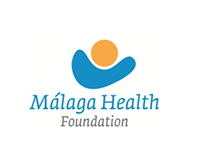Acceso de los editores
Identification of Reference Genes for Quantitative RT-PCR in ascending aortic aneurysms
Eingesendet von. Dr. Carlos Porras Der Artikel wurde in Cirugía Cardiaca publiziert und mit den Tags aorta, genes, bicuspid, aneurysm, cardiac surgery, ascending aortic aneurysm, publication, Journal PLos One versehen«Identification of Reference Genes for Quantitative RT-PCR in Ascending Aortic Aneurysms»
Dominic Henn, Doris Bandner-Risch, Hilja Perttunen, Wolfram Schmied, Carlos Porras, Francisco Ceballos, Noela Rodriguez-Losada, Hans-Joachim Schäfers
PLoS One. 2013;8(1):e54132. doi: 10.1371/journal.pone.0054132. Epub 2013 Jan 11.

Hypertension and congenital aortic valve malformations are frequent causes of ascending aortic aneurysms. The molecular mechanisms of aneurysm formation under these circumstances are not well understood. Reference genes for gene activity studies in aortic tissue that are not influenced by aortic valve morphology and its hemodynamic consequences, aortic dilatation, hypertension, or antihypertensive medication are not available so far. This study determines genes in ascending aortic tissue that are independent of these parameters.
Tissue specimens from dilated and undilated ascending aortas were obtained from 60 patients (age ≤70 years) with different morphologies of the aortic valve (tricuspid undilated n = 24, dilated n = 11; bicuspid undilated n = 6, dilated n = 15; unicuspid dilated n = 4). Of the studied individuals, 36 had hypertension, and 31 received ACE inhibitors or AT1 receptor antagonists. The specimens were obtained intraoperatively from the wall of the ascending aorta. We analyzed the expression levels of 32 candidate reference genes by quantitative RT-PCR (RT-qPCR). Differential expression levels were assessed by parametric statistics. The expression analysis of these 32 genes by RT-qPCR showed that EIF2B1, ELF1, and PPIA remained constant in their expression levels in the different specimen groups, thus being insensitive to aortic valve morphology, aortic dilatation, hypertension, and medication with ACE inhibitors or AT1 receptor antagonists. Unlike many other commonly used reference genes, the genes EIF2B1, ELF1, and PPIA are neither confounded by aortic comorbidities nor by antihypertensive medication and therefore are most suitable for gene expression analysis of ascending aortic tissue.
|
|

- Avenida de los Argonautas, s/n, 29630, Benalmádena, (Málaga)
- Telefonnummer:
(+34) 952 367 190
Gemeinsam sind wir stark

Das Institut für Kardiotechnik vereint das Know-how aus vier Klinikbereichen, um erstklassige kardiologische Behandlungsleistungen zu erbringen.
ICTA: als Team am Puls der Zeit.
Los más leídos
- ¿Qué esperar tras su operación de corazón? (91986 hits)
- Estoy en tratamiento para la hipertensión arterial. ¿Son fiables los aparatos que miden la presión arterial de forma automática? (63083 hits)
- Aneurismas de aorta ascendente: ¿cuándo hay que operar? (53624 hits)
- Insuficiencia aórtica severa: ¿cuándo hay que operar? (36637 hits)
- Evaluacion de los antiinflamatorios en el riesgo cardiovascular (Diclofenaco, Ibuprofeno y Naproxeno) (33525 hits)
- Me voy a operar del corazón. Preguntas frecuentes (FAQ) (33151 hits)
- ¿Qué debe saber si se va a operar del corazón? (32125 hits)
- ¿El consumo moderado de alcohol es bueno para el corazón? (31160 hits)
- Valvulopatías (enfermedad valvular cardiaca): Generalidades (30476 hits)
- El sexo y las enfermedades cardiacas: ¿es seguro el sexo en pacientes con enfermedades del corazón? (28157 hits)
- Trucos para pacientes en autocontrol de tratamiento anticoagulante con Sintron o Warfarina (24876 hits)
- Tratamiento médico de la insuficiencia aórtica (24414 hits)
Nube de etiquetas
Arrhythmien
Auf der Arrhythmien-Station der Herz-Abteilungp behandeln wir Patienten mit Herzrhythmusstörungen. Die Station setzt sich aus zwei spezifischen Bereichen zusammen.
Marfan-Station
Multidisziplinäres Team zur Diagnose, Kontrolle und Behandlung von Patienten mit Marfan-Syndrom.
Herzchirurgie
Die Behandlungstechniken moderner Herzchirurgie: Koronarchirurgie mit und ohne extrakorporalen Kreislauf, konventionelle Herzklappenchirurgie, usw.
Aortenklappen-Station
Pionierteam in der Aortenklappenrekonstruktion. Wir führen Eingriffe an Aortenwurzelaneurysmen in perfekt ausgestatteten Operationssäulen durch.
Klinische Kardiologie
Elektrokardiogramm (EKG), Ergometrie und Echokardiogramm: Praxen in Benalmádena (Krankenhaus Hospital Xanit) und in Fuengirola.
Plötzlicher-Herztod-Station
Früherkennung der Ursachen von Koronarerkrankungen, die zum plötzlichen Herztod beim Sport führen können.
Hämodynamik
Koronarangiographie, Untersuchung von Patienten mit Herzklappenerkrankung:: angeborene Herzfehler beim Erwachsenen, transseptale Katheterisierung, usw.
Kardiologische Rehabilitation
Fachservice zur vollständigen Rehabilitation von Patienten nach An gi na Pec to ris, Herzinfarkt, Operationen, usw.













